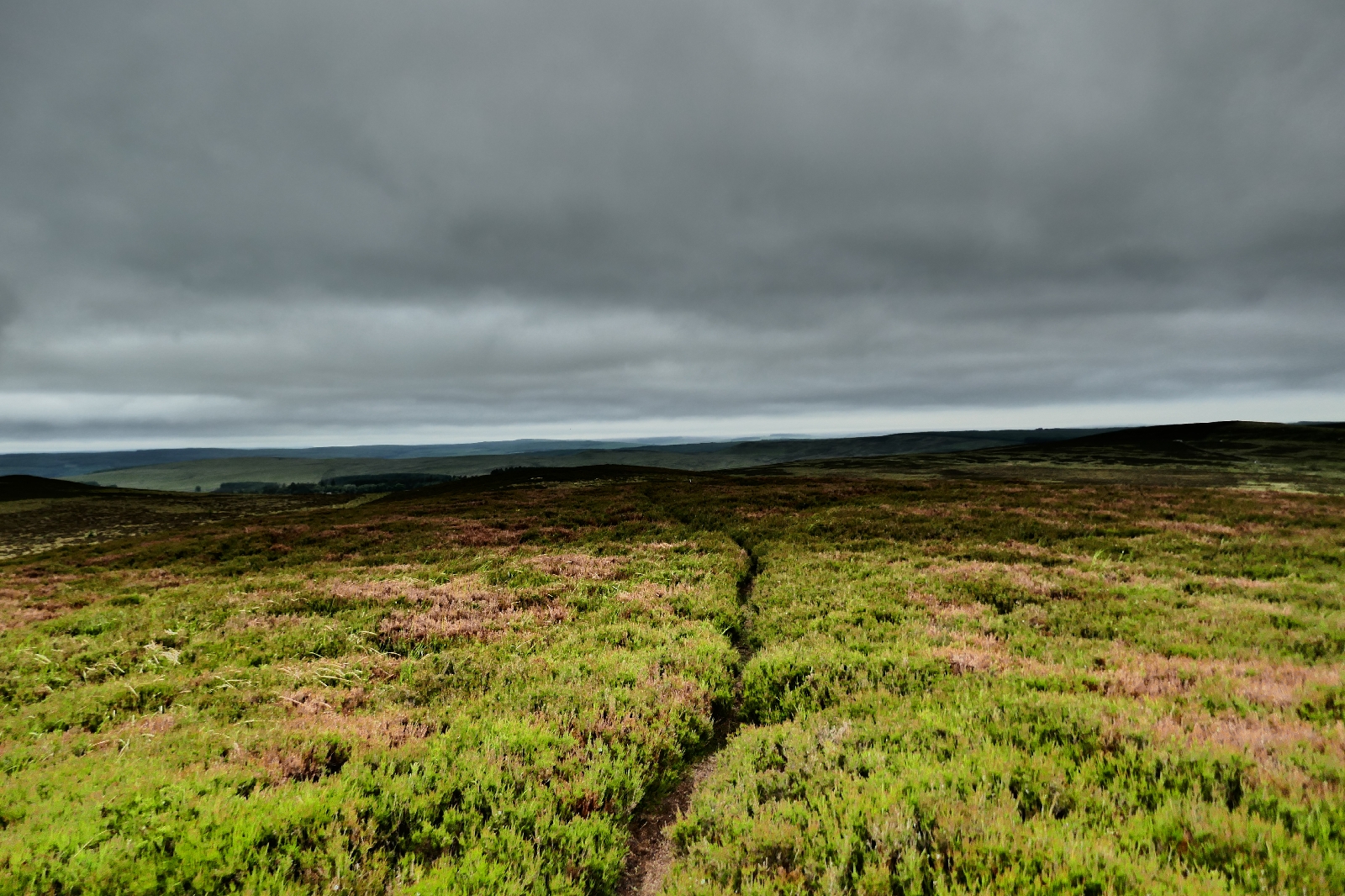Waking up I found the remains of many midges blackening the outer surface of my inner tent. Maybe they had waited all night in the hope I would emerge, and maybe lacking access to my juicy flesh they had run out of energy and died, becoming stuck in the condensation that collects on the inside of my tent on still nights. However in the relentless war on me they had been replaced by legions more, circling outside my inner tent, waiting for me to show some bare flesh. Before exiting I pulled on my clothes, dressed my blisters and packed away as much as possible. Putting on my "Micro head net" I made a dash for the toilets. It is depressing that after washing you then have to cover your exposed flesh (and around your ankles) with insect repellent but it had to be done before I could take my tent down and complete my packing. A man was walking to the toilets with his bare chest on display, was he immune or did the midges just prefer me?
Off by 7:00 am, I was pleased a convenience store was open where I bought a coffee and bridie (a sort of pasty). The lady serving assured me the midges were everywhere. The first 11 kilometres was over a low pass obscured by low cloud and then up a valley to Bridge of Orchy, a route shared with the main road and railway. I watched the Caledonian Sleeper go by on its way to Fort William. As the paths were good I was soon in Bridge of Orchy, a small settlement with a hotel where I had an egg and black pudding roll for a second breakfast during which time the clouds lifted and the sun came out.
After crossing the bridge that presumably gives the place its name, I left the main road and railway behind, glad to loose the sound of traffic that had frequently accompanied me on the West Highland Way so far. I climbed through trees and foxgloves to the moorland and the top of a hill. From the top I looked down on Loch Tulla, which I mistakenly told a couple was Loch Sul. However I did take of photo for them as they hugged each other. Behind them the mountains rose up, a line of clouds strung out below their summits, adding to their beauty and making the summits look higher. Descending I soon began another long climb, a gentle one on a road built long ago by Thomas Telford, now a track for hikers. It led me through moors of grass, heather and bog myrtle. There were several false summits that I, and a well separated line of other hikers were crossing. Eventually the track reached the top of a promontory with the flat area of Rannoch Moor with its many lochs to the right.
Seeing a sign for a café 200 metres away at the Glencoe Mountain Resort, of course I could not resist making a detour and was soon enjoying a Coke with a cheese and tomato roll. Although the resort was open using a number of temporary looking cabins, the place looked in the process of construction. Primarily a ski resort at the bottom of a chair lift, the place had existed for many decades, but maybe they were rebuilding and expanding into mountain biking and other activities. I could have stayed at one of their "hobbit houses", a trendy name for small wooden cabins, however I wanted to cover a few more miles so that I could easily reach Fort William tomorrow where I could avoid the midges for a few nights. So with tired knees I walked down to the Kingshouse hotel (filling my water bottle at a tap kindly provided there) and continued into Glencoe, determinedly ignoring the no doubt refreshing glasses of cool, amber beer catching the sun, that people were drinking outside the hotel bar.
After a walking down the vast, glacially formed valley of Glencoe for a while, passing and being passed by other walkers, I began a long climb up what is known as the Devil's Staircase. On the final zigzag section I repassed a father and son who had passed me earlier. The father said "well done" which I thought was kind. They soon overtook me again as I stopped for a photo of the impressively large mountains on the other side of Glencoe.
I am now camped on the ridge at the top, a little way up from the path, on a flat area of damp mossy grass among outcrops of rock. Outcrops convenient for sitting on, eating my tea while the condensation left from this morning when I packed up the wet tent, dries in the late afternoon light. Up this high it is a little cooler, there are fewer midges and an intermittent zephyr, but best of all is the panorama of mountains on both sides of the ridge. The sun is casting shadows as the earth slowly spins me away from its glare into evening, accentuating the beauty of the creviced rocks. Wild camping in the Highlands at its best.




















































